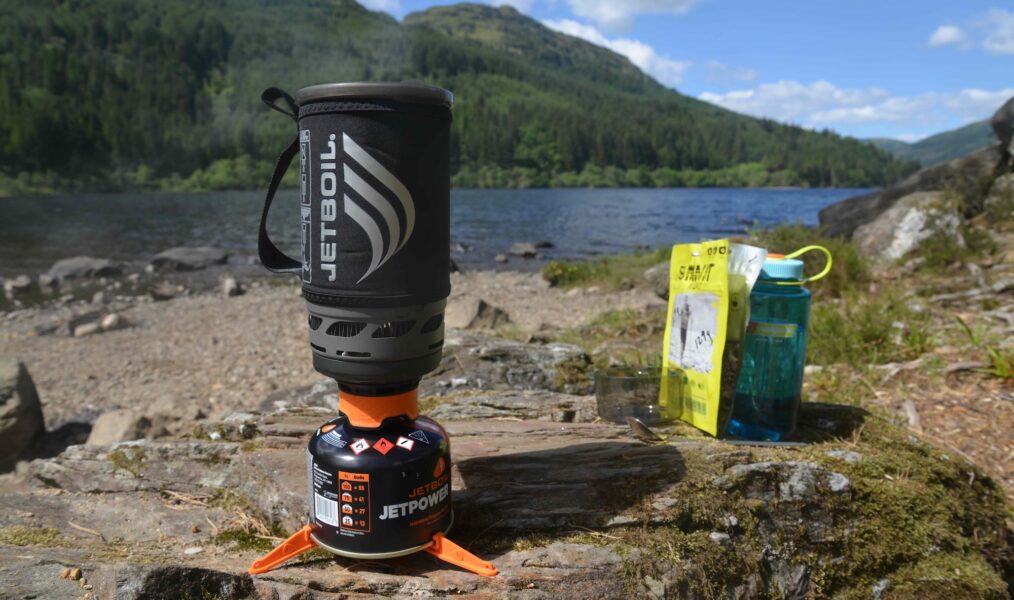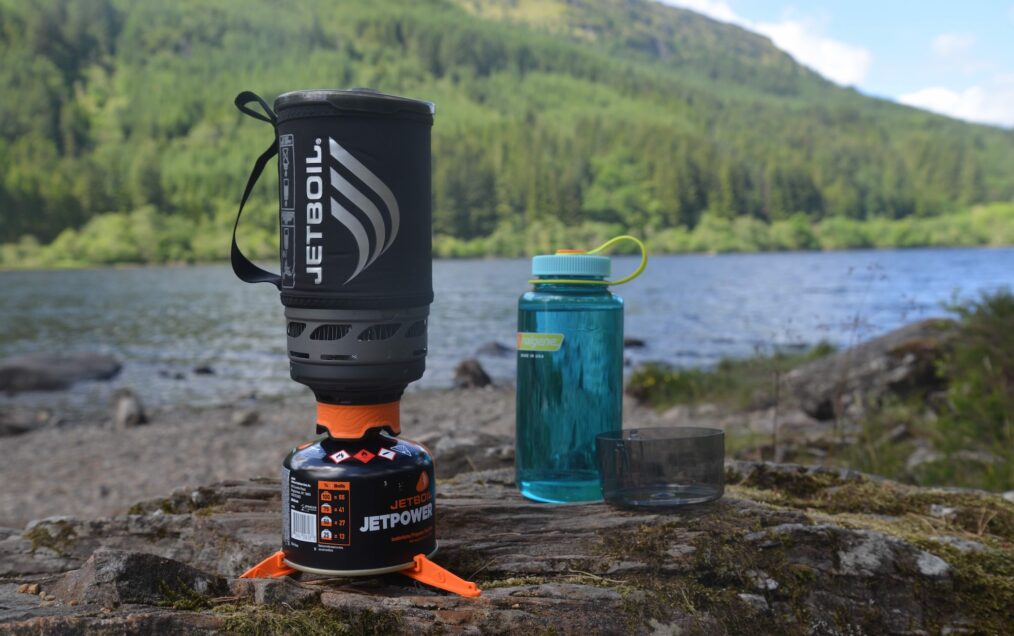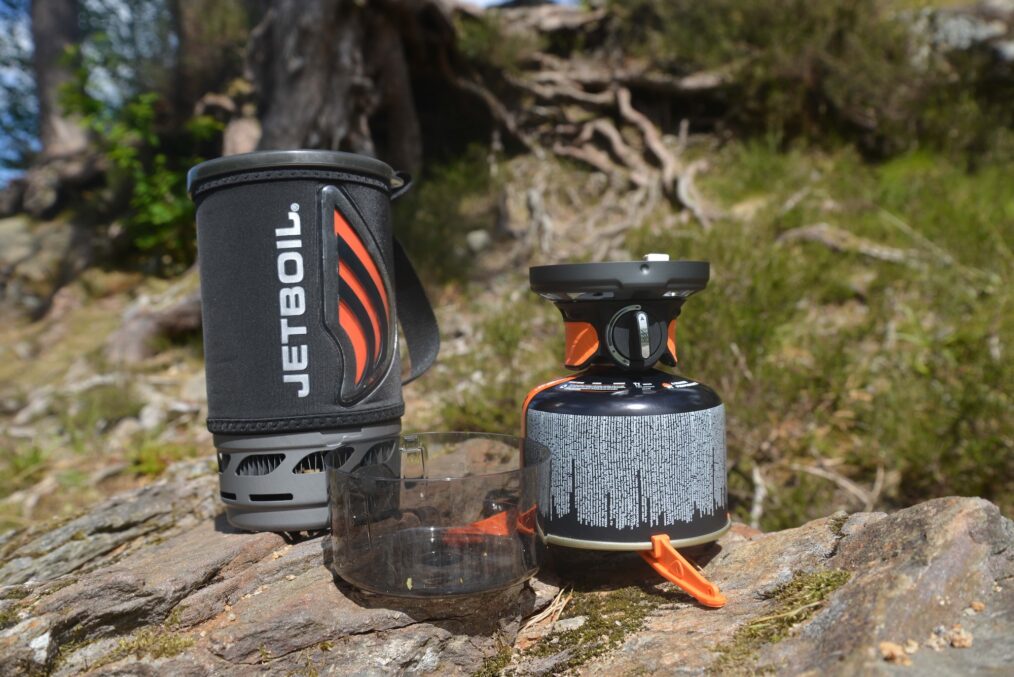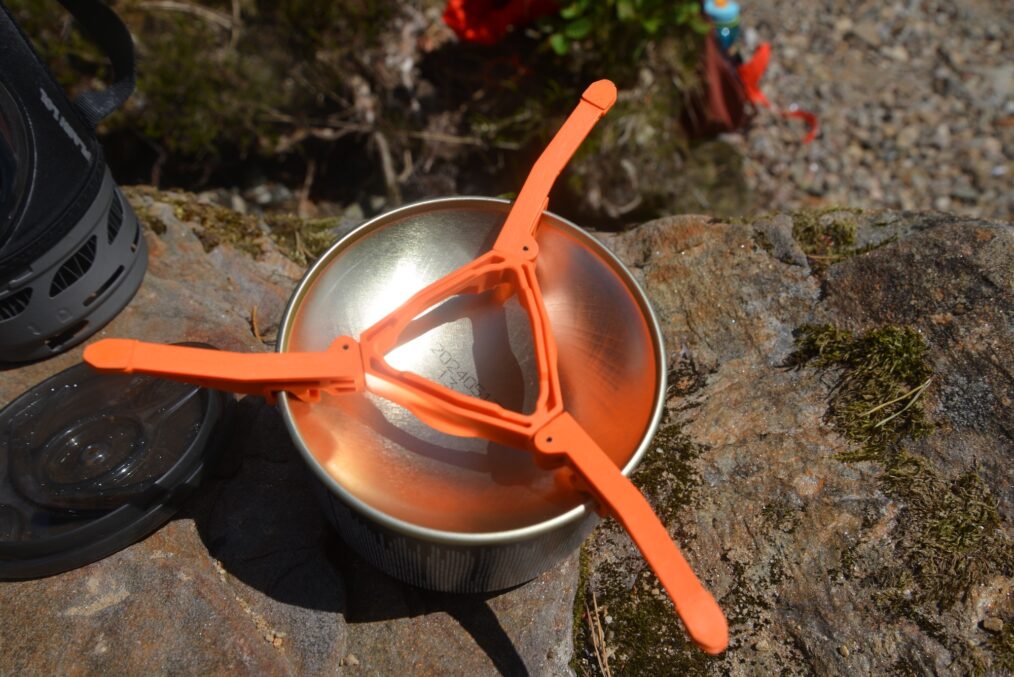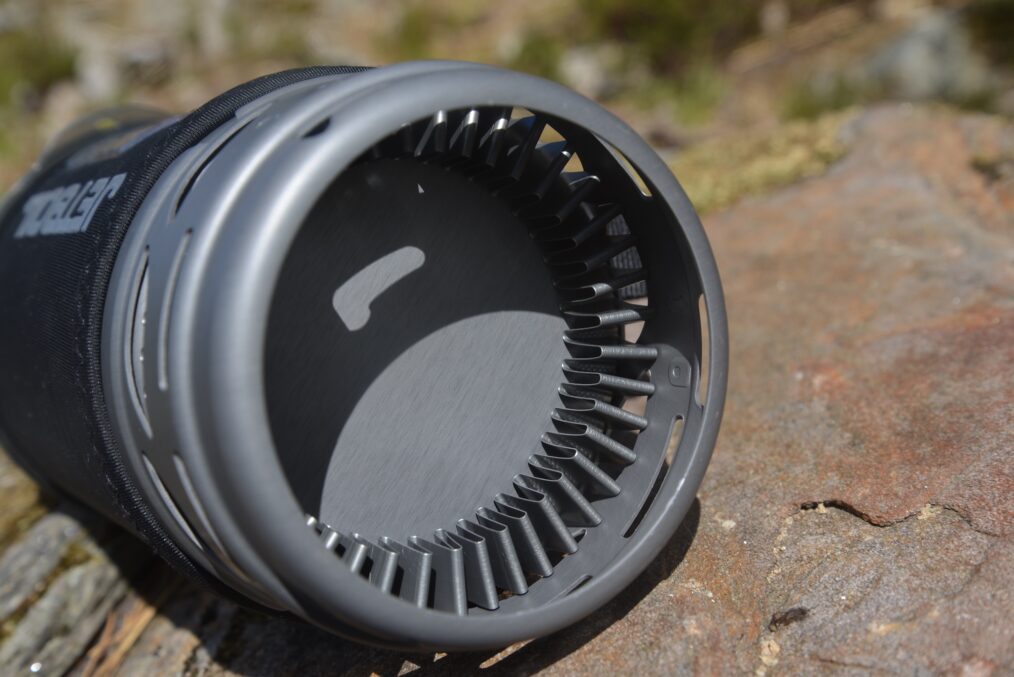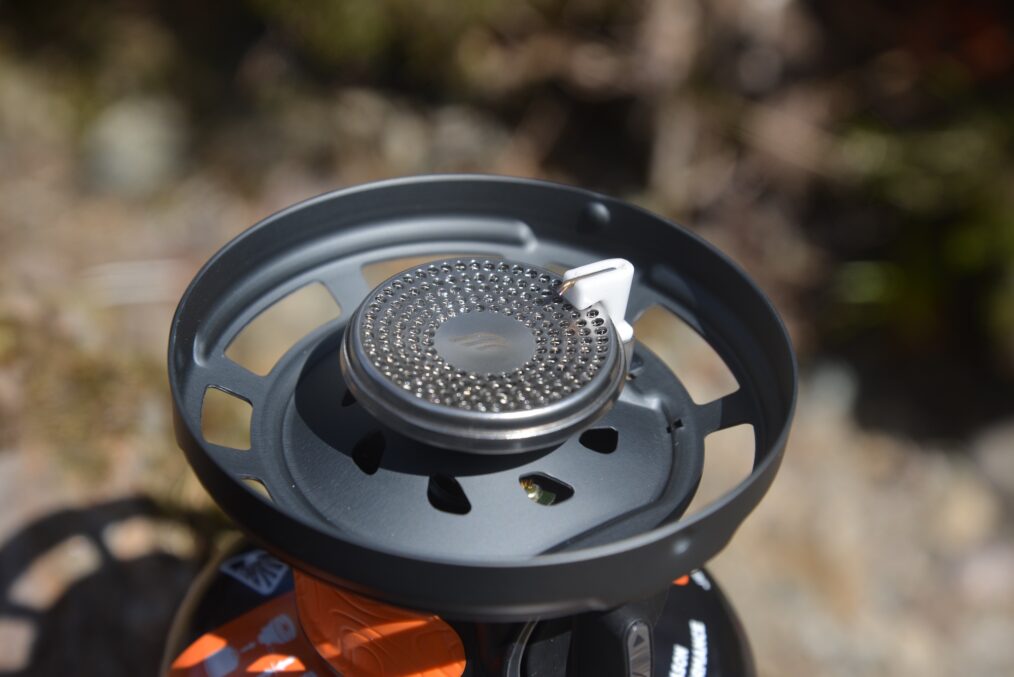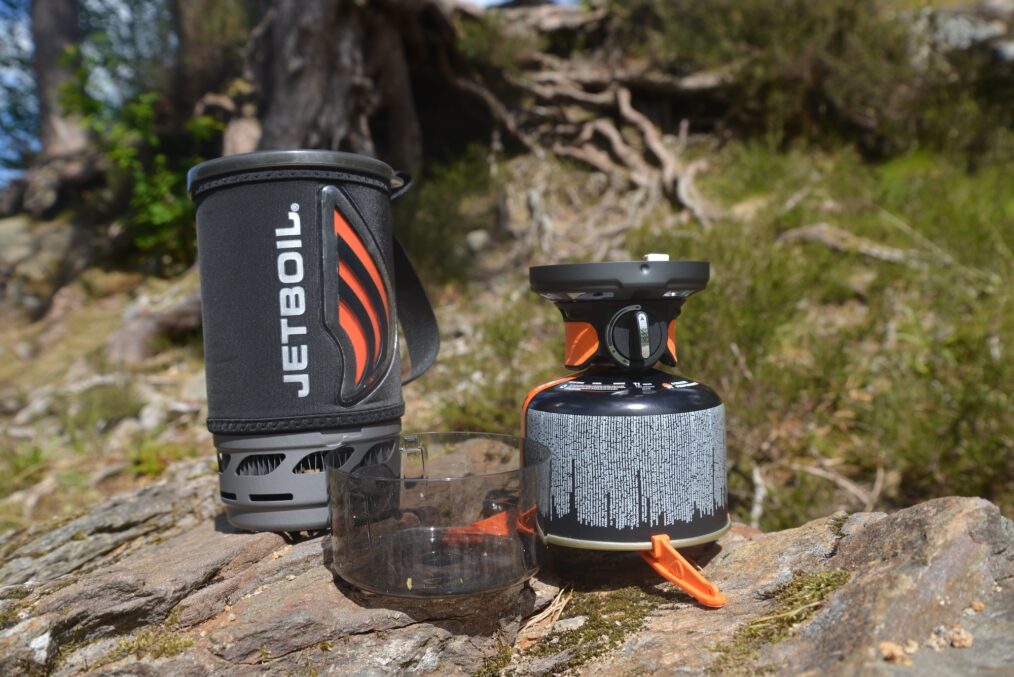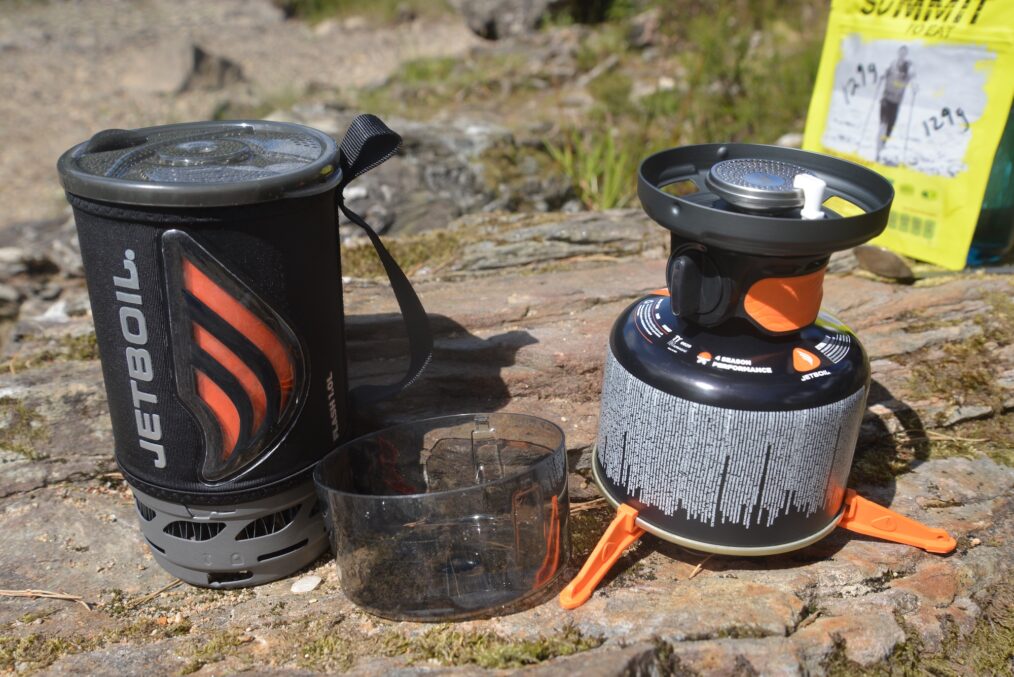The Jetboil name is synonymous with the all-in-one ‘personal stove systems’ (also called ‘tower’ systems) that the company pioneered in the early 2000’s, driven by the desire of founders Dwight Aspinwall and Perry Dowst to create a more efficient and compact stove system than that of more traditional designs.
The concept they came up with combined the stove burner with a pot that featured a heat exchanger consisting of multiple fins which increased the surface area of the bottom of the pot to speed up boil times and mitigate (some of) the effects of wind. The idea has since been adopted by other brands including MSR (with the Reactor series), Primus (with their Lite stoves) and Alpkit (with the Brukit), however the name Jetboil has virtually become a generic term for tower stoves, much in the way Hoover once was for vacuum cleaners. The Flash was not the company’s first model, but was first introduced in 2009 and has gone on to become Jetboil’s biggest-selling product. We’ll come onto the improvements/revisions on this latest version of the Flash shortly, but let’s take a quick look at how it compares to the other models in the Jetboil range.

Combined pot/heat exchanger on the left, with the burner and gas canister on the right
The range
Jetboil splits its range of stoves into two categories – regulated and unregulated. Stoves with pressure-regulated valves are able to adjust the gas flow to ensure that the optimal level of performance is achieved, and this is particularly important in cold conditions, at high altitude and when the fuel level is low. Regulated stoves in the Jetboil range include the MightyMo (£74.99), MicroMo (£174.99) and MiniMo (£184.99), and of these both the MicroMo and MiniMo are tower systems.
The Flash falls into the unregulated category and Jetboil describe it as a 3-season stove. You can still use it in colder temperatures of course, however it won’t be as efficient as a regulated stove and you will use more gas to achieve the same result. The other unregulated stoves in the range include the Zip (£119.99) and the Stash (£154.99). The Zip is essentially a cut-down Flash, with a smaller cooking cup (0.8L), and without the colour-change heat indicator and combined push-button ignitor of the Flash. You can still use the various accessories such as the coffee press, hanging kit, pot support and so on. The Stash, on the other hand, is a slightly different beast to the Flash and Zip. Light weight is the name of the game here, with this model being 40% lighter than the Zip, and featuring a titanium burner. There’s less protection for the flame though, so in windy conditions you may struggle.

Spark wire is now encased with ceramic to make it more durable
Flash 1.0L
So now we’ve had a bit of Jetboil history and an overview of their stove range, let’s dive into the detail of the Flash 1.0L stove. The stove essentially consists of two parts (plus a gas canister) – the burner itself and the cooking cup/pot which attaches to the burner by a simple twist mechanism. The burner unit sees some updates from previous versions – a grippy rubber covering that makes handling easier and safer when attaching/detaching the pot, and the combined ignition/valve control which is a real improvement, making lighting the stove quicker and easier. The beauty of this design is that you can easily see when the valve is closed, so you can avoid wasting gas in the instance that you connect the canister when the valve is in the open position. One anti-clockwise twist of the dial turns the gas on and ignites it simultaneously. Another improvement is the spark wire on the burner which is now encased in ceramic, making it more durable.

Fold-out legs attach to the bottom of the gas canister to improve stability
Onto the pot itself, and this will feel very familiar to anyone who has used the Flash before. The insulated jacket incorporates a coloured temperature indicator – silver when cold and red when hot, and the lid incorporates a strainer so that most times you don’t even have to take it off. Boil time for 1L of water is about 2 minutes, which is about as fast as you can get. The stability of the Flash is not as good as traditional stove systems, however this is a downside of tower systems generally, not just the Flash. For campers who want to do more than heat water, the Pan Support 2.0 accessory allows various pots and pans to be used with the Flash, increasing its versatility and making ‘proper’ meals possible.
In conclusion, then, this latest version of the Flash offers several very worthwhile improvements on the previous version, especially the combined ignition/valve control which really does make life easier. For heating water for drinks or freeze-dried meals, the Flash is still one of the best and quickest options available, while if you do want to actually cook something yourself then the pan support accessory allows you to use pots and pans.
More info: www.jetboil.co.uk


